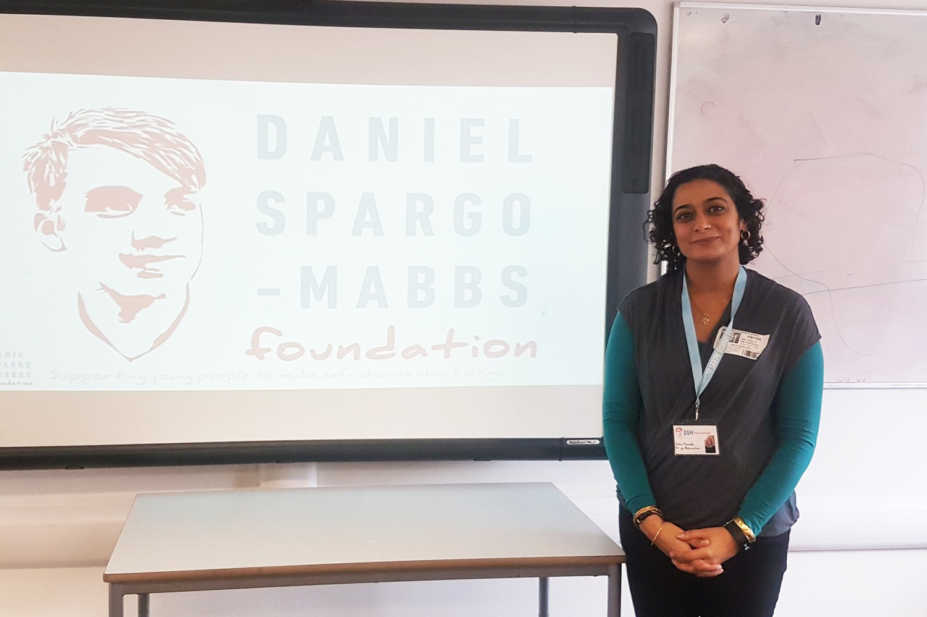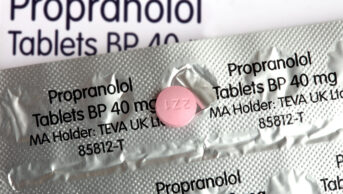
Asha Fowells
I am self-employed as a drugs educator for the Daniel Spargo-Mabbs Foundation (DSMF); my role mainly involves running workshops in schools and colleges about alcohol and drugs. The aim is to equip young people with knowledge and skills to make safer choices when they are in situations involving such substances, as they all pose risks to some extent.
My pharmacy background is invaluable, as it means I can talk knowledgably about drugs, both legal and illicit. I also work as a freelance writer and journalist, which means I am generally abreast of relevant news and publications that inform the sessions I run.
6:30 — start
My days working for DSMF often start early — as I visit schools all over London, and sometimes further afield, I generally need to be there for the start of the academic day. I plan and submit workshops to the schools beforehand, and I carry with me my disclosure and barring service paperwork and any resources that I need for the hands-on activities I am going to run.
8:30
Once at the school, I’m shown to a classroom to set up. One of the trickiest things I have to deal with is the huge variation in technology between educational institutions: in some places, the presentation is preloaded and it all goes smoothly, but at other times computers or smartboards freeze, or the video clips we like to use don’t make it through the school’s firewall or simply won’t play. It’s vital to be able to think on your feet.
9:00
By this time, I’ll generally have started my first workshop. Group sizes vary enormously, from 15 or 20 students if the students are rotating through various sessions over the course of the day, to more than 300 in an assembly. The amount of time we have is dictated by the school — it can be as short as half an hour, or as long as half a day per session.
We get as much insight as we can before visiting schools, so we can tailor what we do to best fit the cohort
The pupils are aged anywhere from 10 years in a primary school to 20 years in a further-education college. The institutions range from independent schools in leafy suburbs to inner-city state schools. We get as much insight as we can before visiting — with older age groups, we often survey the students themselves — so we can tailor what we do to best fit the cohort, but it is also really important to not make any judgements. I clearly recall being nervous as I walked into a boys’ school in south London alongside the pupils who were shouting and jostling each other, but then found that they were gentle, innocent and very well-mannered, while the behaviour of the students at a school in a much more genteel area was considerably more challenging.
14:00
By early afternoon, I’ll generally have finished running several back-to-back sessions for different groups, covering the same material each time. This often includes exploring what the students understand by the term ‘drug’; describing the differences between legal drugs, (i.e. medicines) and substances of abuse; talking about the reasons why people use drugs, with a particular focus on the adolescent brain and peer pressure; and ways in which they can keep themselves as safe as possible.
It’s not about pushing the ‘just say no’ message, but instead equipping them with information to make more informed choices that reduce the potential for harm.
Our workshops are not lectures, but are interactive. For example, we often get a few volunteers to drink glasses of water, only for an unlucky person to discover that one is contaminated with salt. This activity starts a discussion about the issues surrounding the manufacture of illegal drugs. We find video clips an effective tool.
We always ask schools if there is anything in particular they want us to focus on — some might find that ketamine or cocaine is becoming a problem, whereas in other places it might be nitrous oxide or underage vaping — and older age groups are surveyed with the same aim. We concentrate on the two substances that particularly affect young people: cannabis and alcohol.
I spend a few minutes packing up and noting down what worked and what can be improved. Feedback is also sought separately from the educational institute and the students themselves. I then thank the teachers, at least one of whom is present throughout our sessions: having a member of staff in the room who knows the pupils and can manage thier behaviour is invaluable.
17:00
Once home, I might prepare for an upcoming school visit. This involves making a lesson plan, preparing a slide set, and liaising with DSMF colleagues to share learning and insight, as well as with staff members at the school in question. All of the materials we use are constantly being reviewed to make sure they are as up-to-date and relevant as possible, and reflect the feedback we receive — both within sessions and on a more formal basis afterwards. This continuous improvement approach also applies to the resources we provide to schools for their own use, either as a follow-up to the workshops we run or on their own as part of their personal, social, health and citizenship education curriculum.
Ultimately, my team and I have a very simple aim: to arm kids with the knowledge to get home safely to their loved ones
18:30
Tonight, I am supporting a performance of a play commissioned by the DSMF. ‘I Love You Mum, I Promise I Won’t Die’ tells the story of 16-year-old Dan, after whom the charity is named, and the weekend he took a lethal dose of ecstasy and died two days later. The play, and a short film also commissioned by the foundation that tells the same story, is heart-wrenching but so relatable that it never fails to make an impact. These performances, which take place regularly, provide valuable context for the importance of all the work that we do.
20:30 — finish
It’s packing up time, but parents might still have questions for Fiona Spargo-Mabbs — Dan’s mum and founder of the charity, who usually runs the evening sessions for parents and carers — and me. My pharmacy background really comes to the fore here as I am able to answer questions audience members may have about drug and alcohol abuse and the associated health implications.
At the end of the day I am tired, but in a good way. To me, my role as a drugs educator is public health work, in much the same way as when I spoke to patients when providing emergency contraception or substance misuse services when I worked as a community pharmacist. The DSMF goes into nearly 300 schools and colleges, and it puts on some hundred performances of the play on an annual basis, which starkly illustrates the need for this kind of education. Ultimately, my team and I have a very simple aim: to arm kids with the knowledge to get home safely to their loved ones.
For more information, visit www.dsmfoundation.org.uk or search for the Daniel Spargo-Mabbs Foundation on Facebook, Twitter and Instagram.
Advice to pharmacists interested in becoming a drugs educator
- Drugs education is akin to public health work — if you can counsel a patient on medicines, you can explain drugs and harm reduction to young people;
- Don’t worry if you are not a perfect fit for a job role on paper — focus on what you do know, any related experience you can draw on, and how you can fill the gaps;
- Only apply if you believe in the message and ethos of the charity you’ll be working for;
- Standing up in front of teenagers is intimidating, but remember that you are the expert in the room and that makes you an authority figure;
- Be prepared to adapt material on the spot because anything that can go wrong will go wrong at some point;
- Pay varies and is dependent on the different tasks carried out; for example, presenting, preparing for workshops or supporting events.


